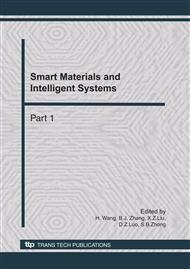p.129
p.134
p.139
p.143
p.148
p.152
p.156
p.161
p.166
Simulation and Analysis of Roller Eccentricity Compensation in Cold Mill
Abstract:
With the increase request of strip quality, the roller eccentricity has become the important factor of influencing product quality. On the practical model of Cold-rolling Mill of 300, this paper establishes eccentricity compensation control practice of Cold-rolling Mill of 300 which applies wavelet transform method. Based on mufti-resolution decomposition of roll force signal by use of wavelets, eccentricity signals are separated from disturbances and noise,and self-optimization is employed to real-time control the roller eccentricity. The results show that the method is effective.
Info:
Periodical:
Pages:
148-151
Citation:
Online since:
October 2010
Authors:
Keywords:
Price:
Сopyright:
© 2011 Trans Tech Publications Ltd. All Rights Reserved
Share:
Citation:


